February 21st, 2012 — 5:13pm
Once again, posts have been few and far between over the last month. What can I say? I’m a busy man. I’ve just submitted the text for the forthcoming ‘Enchanting Myanmar’ book which should be out in October. I currently editing and selecting photographs, a long and laborious task.

Anyway, here’re a few snaps from Inle Lake, one of Myanmar’s most popular tourist destinations. Located 35 kilometres from the town of Heho in the Shan State, the shallow lake covers over 110 square kilometres and is surrounded by villages inhabited by Intha, Shan and other ethnic groups and hill tribes including Pa O and Padaung.
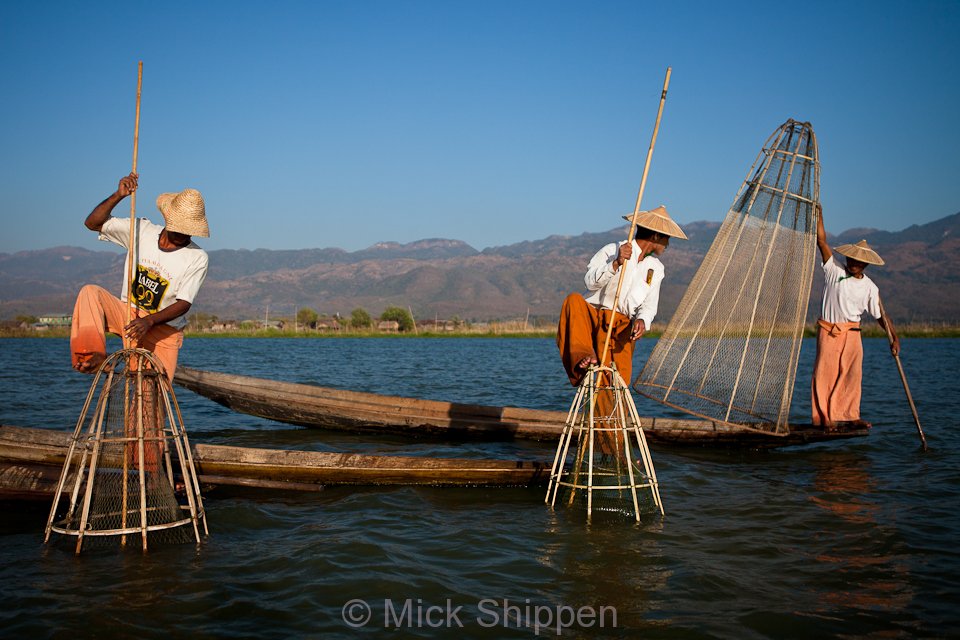
Most visitors stay on stilted resorts over the water and around the edge of the lake, and make excursions by boat to colourful morning markets in nearby villages.
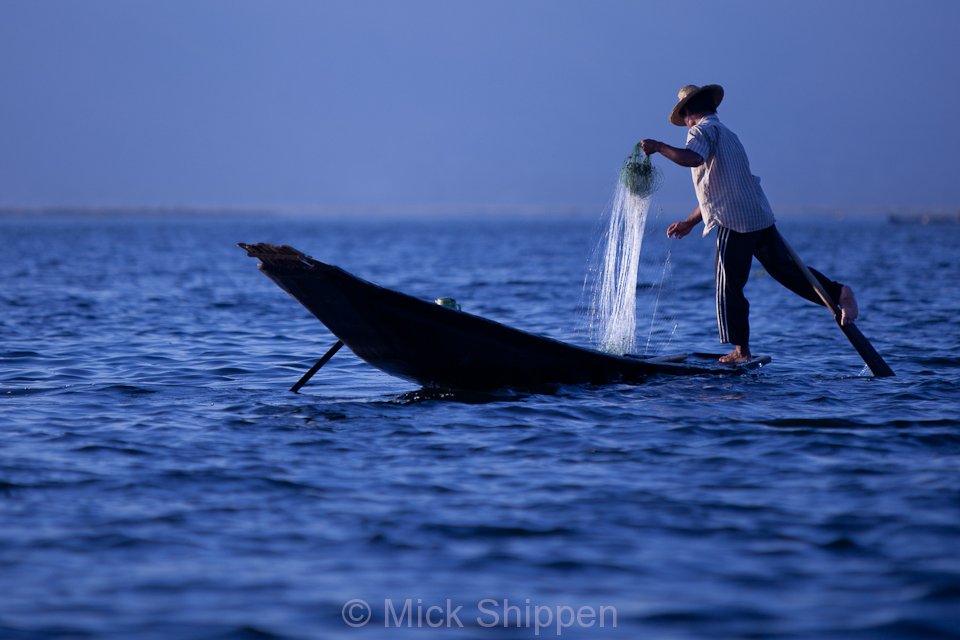
One of the curiosities of the lake is the leg rowing fishermen who also use large conical baskets to catch fish. Bobbing around in another boat, it’s a challenge to capture good shots but these do the job.
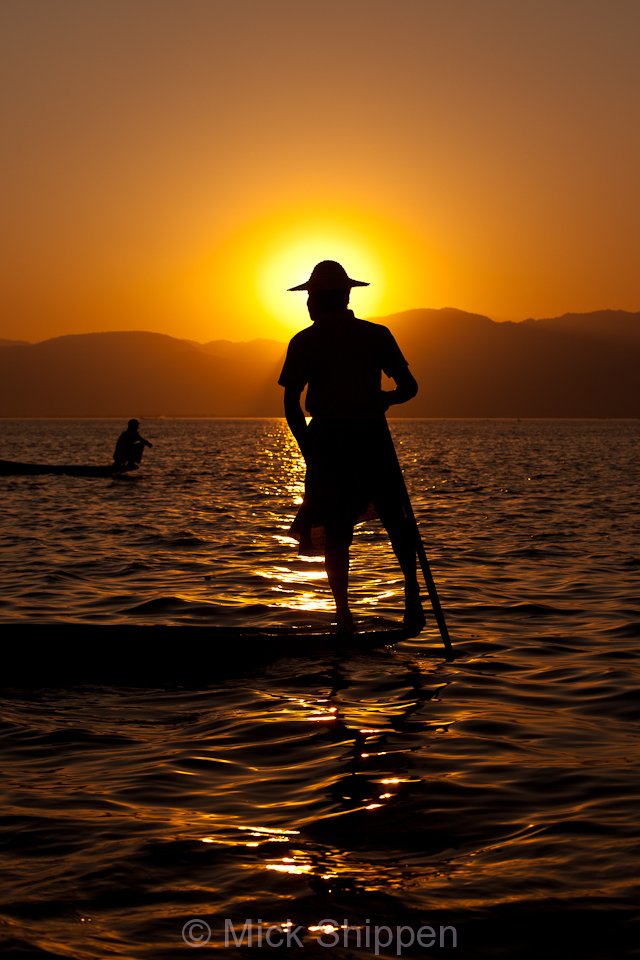
There’s a few more in the Myanmar Gallery.
Comment » | Travel
November 23rd, 2011 — 6:07pm
On my last few visits to Myanmar it has been clear to me that there is a renewed sense of optimism within the country. The photo below was catpured in Yangon and illustrates this beautifully. Just a year ago, such a scene would have been unthinkable.
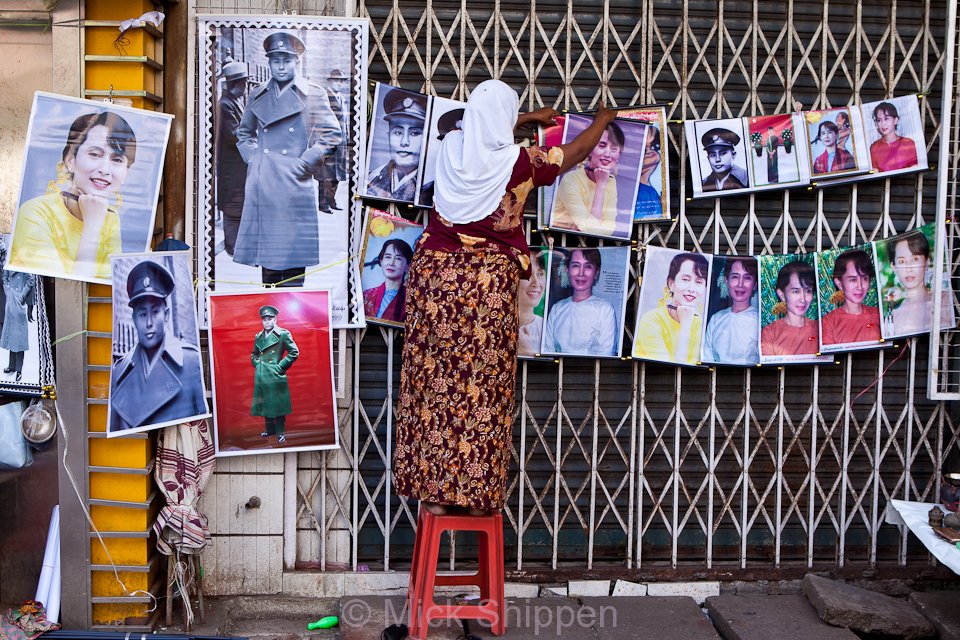
I have been visiting Myanmar for the past 15 years, regardless of the political climate, traveling extensively in both urban and remote areas. I always objected to being lectured to by politicians as where I should not travel, always opting for personal experience and direct engagement with locals over taking the advice of sanctamonious wankers like Blair. If, as an individual, you were to make judgments as to where you should or should not travel based on government action, the USA and the UK would have been high on the list of places to avoid for decades.
During my recent visit to Myanmar I noticed a large increase in the number of tourists, particularly from Europe, and a tour operator I talked to said that next year they expected a leap in arrivals. Of course, this is all dependent on the continued thaw in relations with Europe and America. But I say visit regardless. The people are as warm and welcoming as you could ever wish to meet…and yes, they want you there.
Comment » | Travel
November 23rd, 2011 — 5:12pm
In Myanmar, the staple diet is rice; a grain has shaped the landscape of the Irrawaddy Delta. Paddy cultivation is still predominately organic and not mechanized.
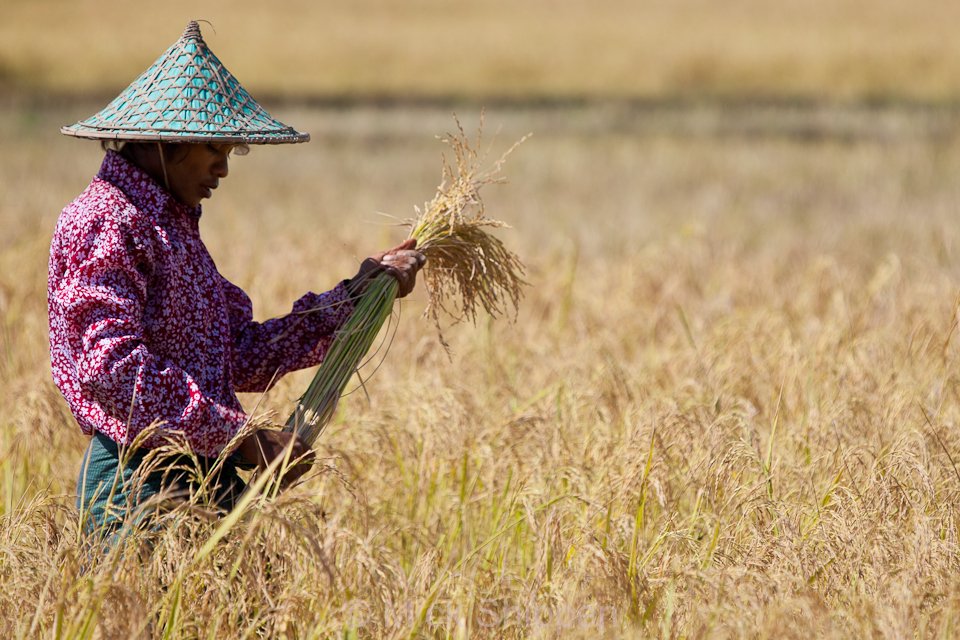
From the ploughing, broadcasting of seed, the replanting of nursery seedlings, to harvest and threshing, all the work is done without the use of machines. It was also been stated that rice production generates a direct or indirect income for many as 75 percent of the population. Prior to World War II, Myanmar was the world’s largest rice producer and even today after years of economic and political isolation it is still in the top ten.
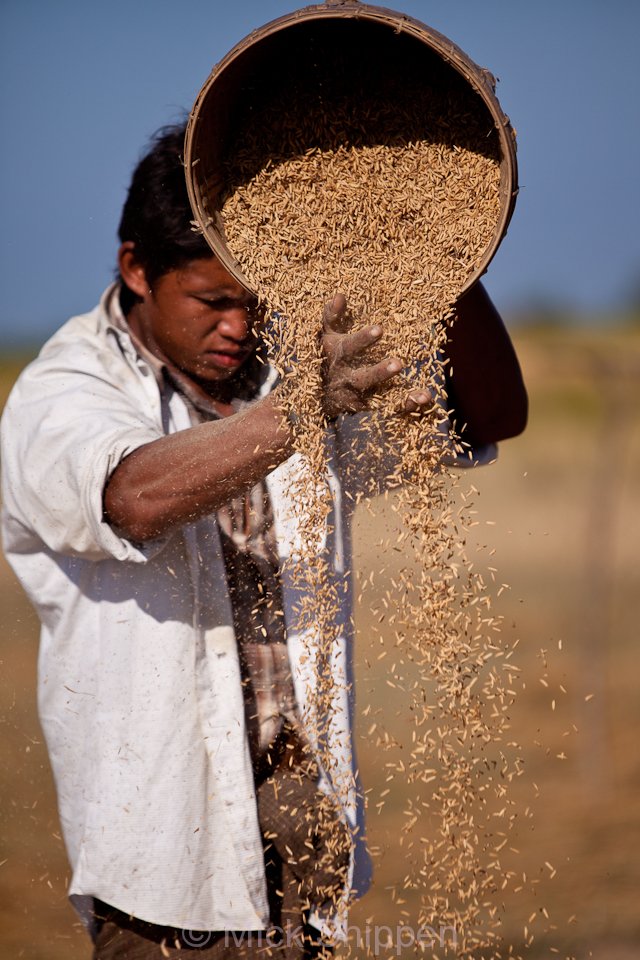
During my recent visit, it was harvest time. While traveling across country I stopped off at a few fields to photograph the harvest and the winnowing of rice. The whole process is backbreaking work done under the glare of a hot sun.
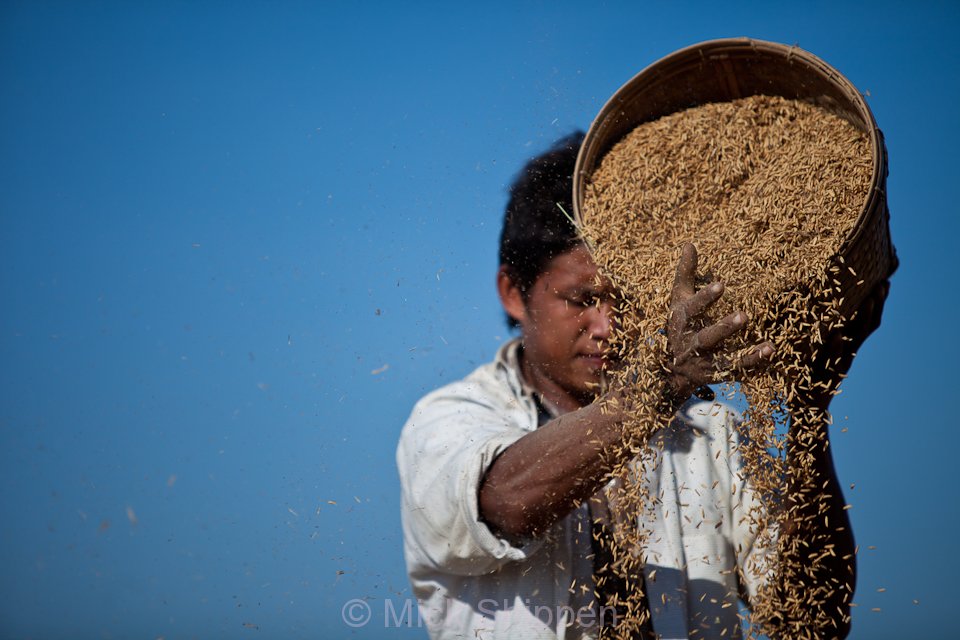
I have nothing but admiration for the farmers grafting for little more than a subsistence lifestyle.
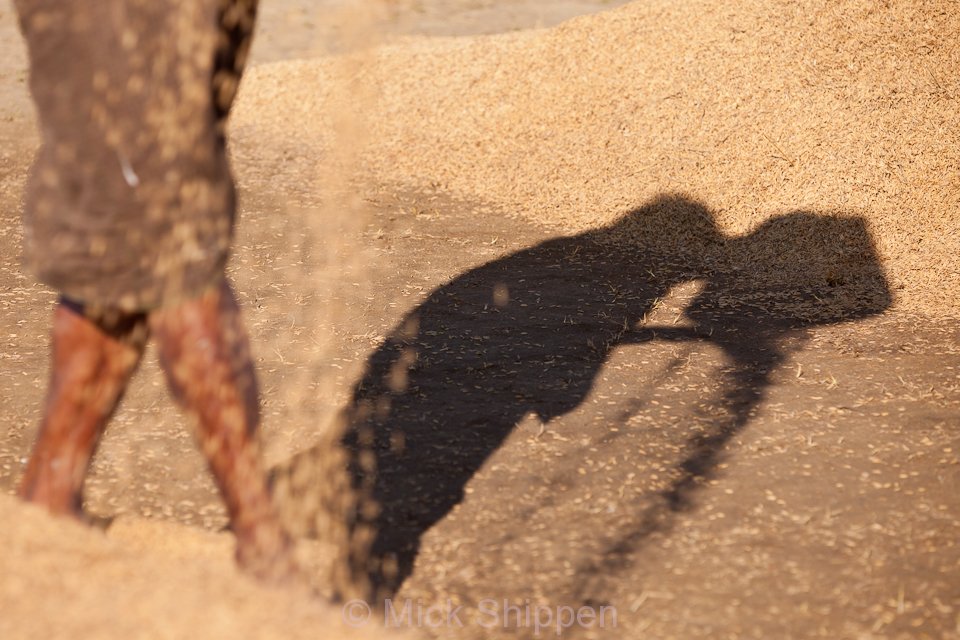
Comment » | Travel
November 22nd, 2011 — 5:20pm
Travel another couple of hours up the Lemro River from Mrauk U and you’ll enter the lower reaches of the Chin State. Most of this mountainous area is currently off limits to travellers but a handful of ethnic villages can now be visited with a guide. The main attractions for tourists, in addition to the outstanding natural beauty, are the ethnic Chin women who sport impressive facial tattoos.
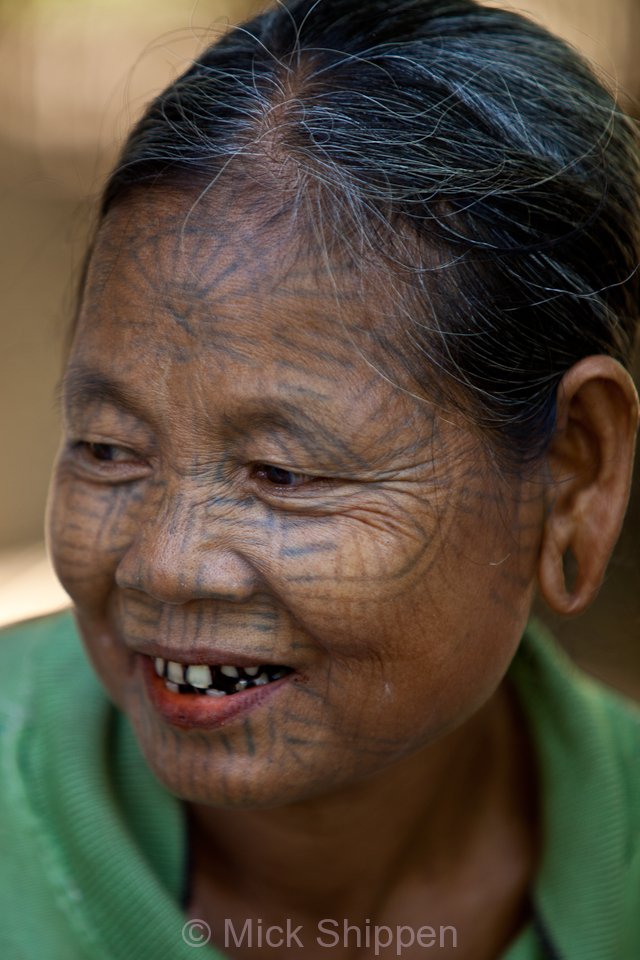
In most villages there are only two or three women remaining with the distinctive tattoos as the tradition is said have died out. I hope to be able to get permission to explore deeper into the Chin State at a later date and see if this is true or not.
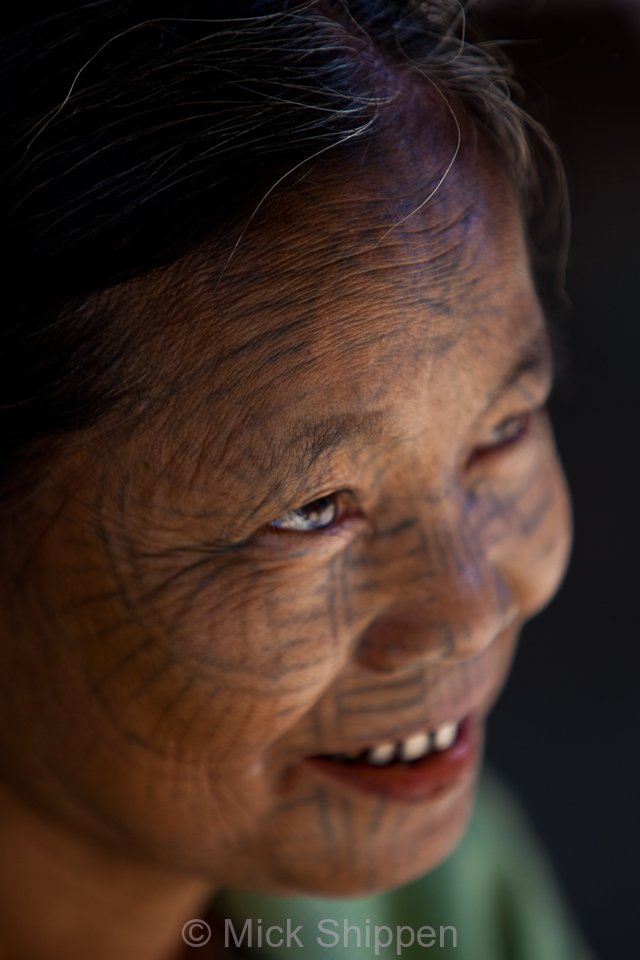
The women are very welcoming as they don’t receive too many visitors yet. However, Myanmar’s tourist industry is on the verge of a boom and I suspect these lovely women will soon tire of the intrusion.
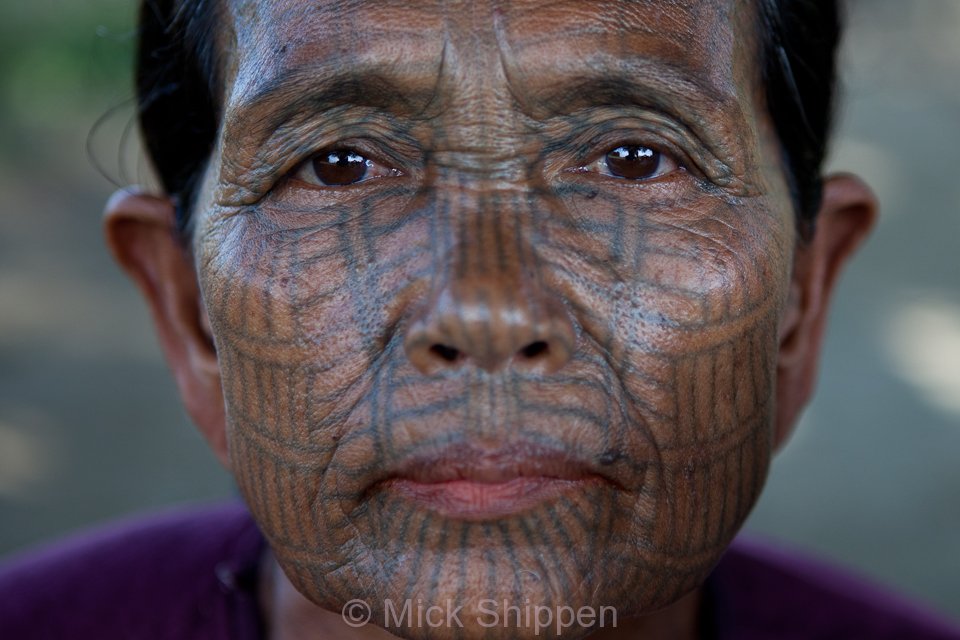
The ladies told me that they were about 12 years old when the tattoo ritual took place and the process lasted for three days. Reasons given for the practice vary but the most common explanation is that it was done to make the young girls less attractive to other tribes and prevent them being kidnapped. All agree, however, that the process was extremely painful to endure with even the eyelids being tattoo with the needle and dye extracted from a plant.
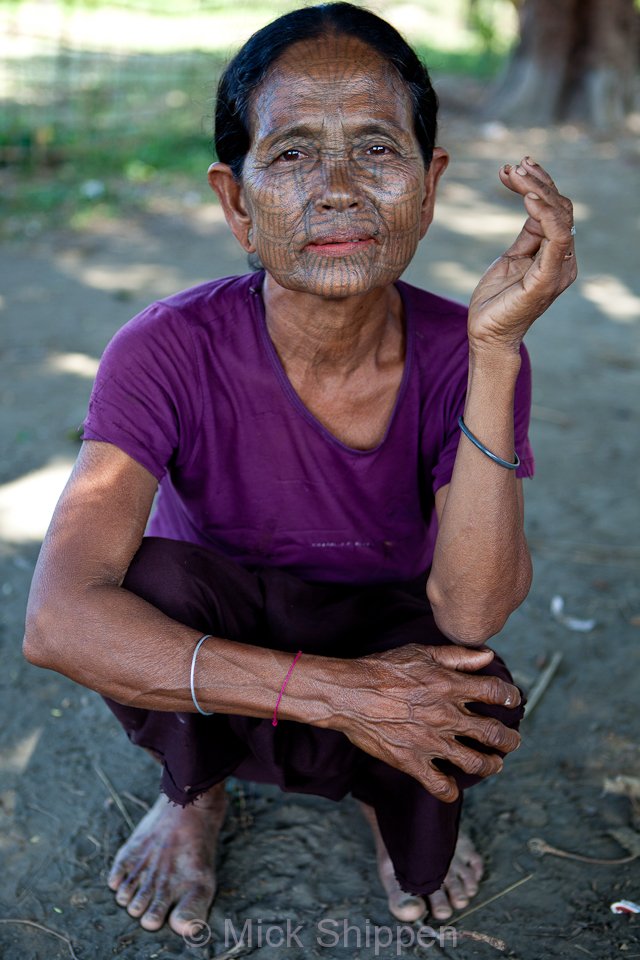
There are occasions when I must admit to being a reluctant photographer and upon meeting the Chin women, I experienced one of those moments. Despite being told that they had no objection to me photographing them, I think I would have preferred just to sit and talk rather than shove my lens in their face. Nevertheless I had a job to do. I was also made to promise that I will try and get a picture to one of the ladies which I intend to do.
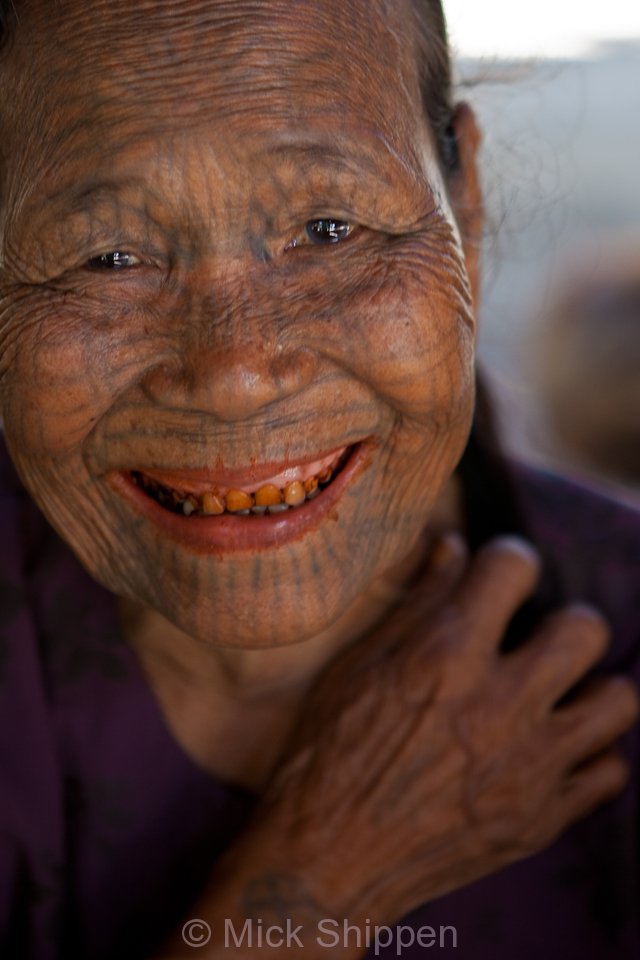
Comment » | Travel
November 22nd, 2011 — 4:10pm
The former capital Rakhine State in western Myanmar (Burma), Mrauk U – pronounced Mror Oo – is an atmospheric town and home to many beautiful ancient temples. It is reached following a 6 hour boat journey from Sittwe. Although the area currently welcomes few tourists that will soon change and won’t be too long before an airstrip opens to cut out the boat trip.
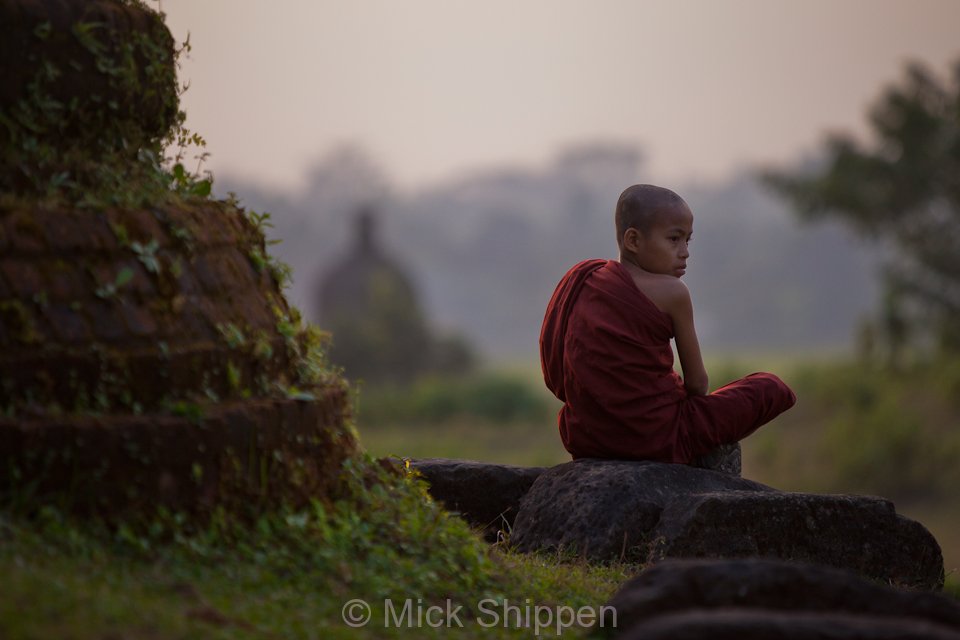
The town and surrounding countryside is scattered with temple ruins, many of which are still used by local people and monks.
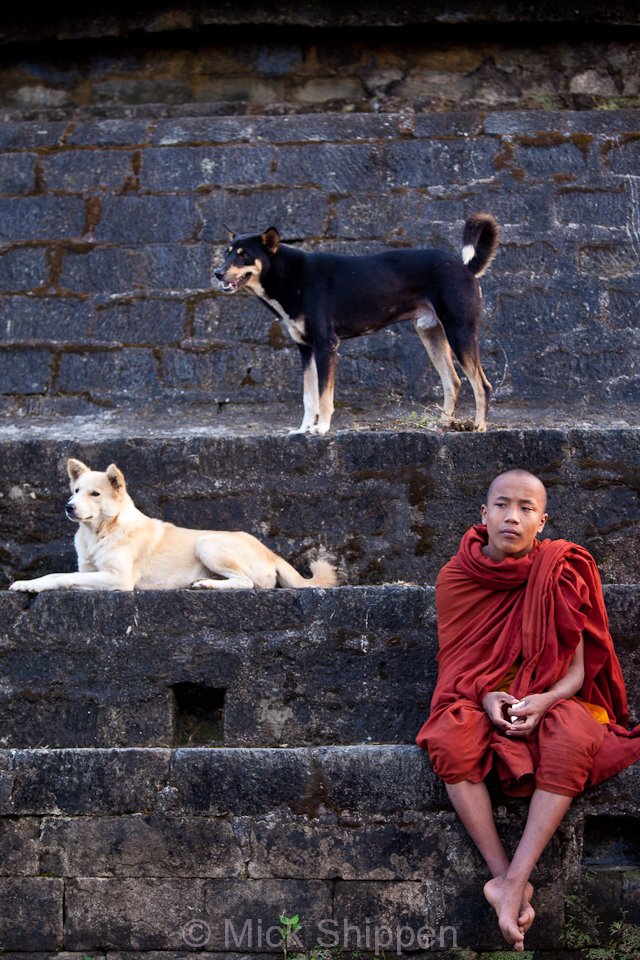
I was lucky enough to be there on the night of the full moon, always a special time to be at a temple in Myanmar, and get some nice shot of monks relaxing as the sun set.
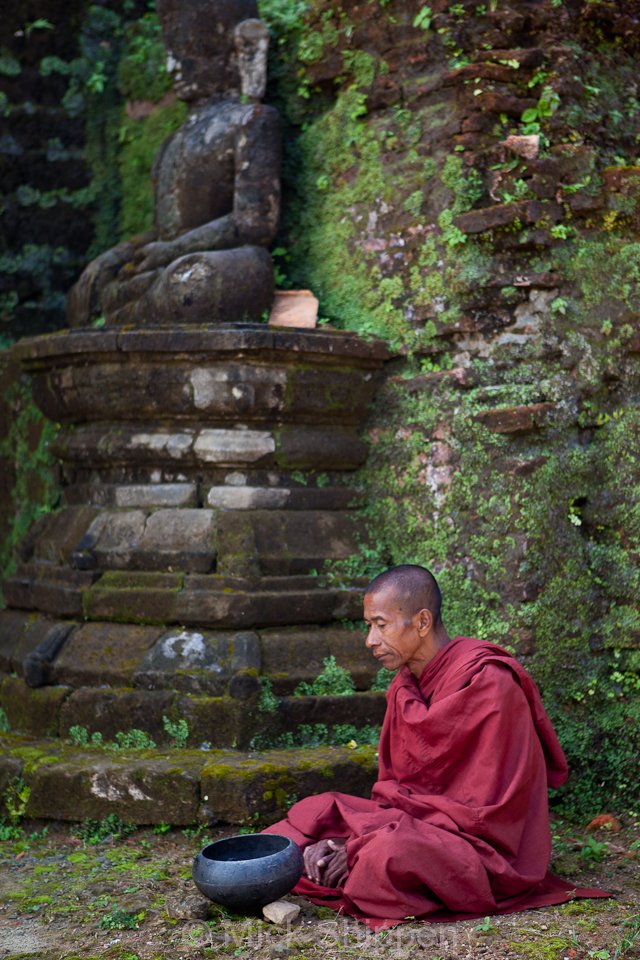
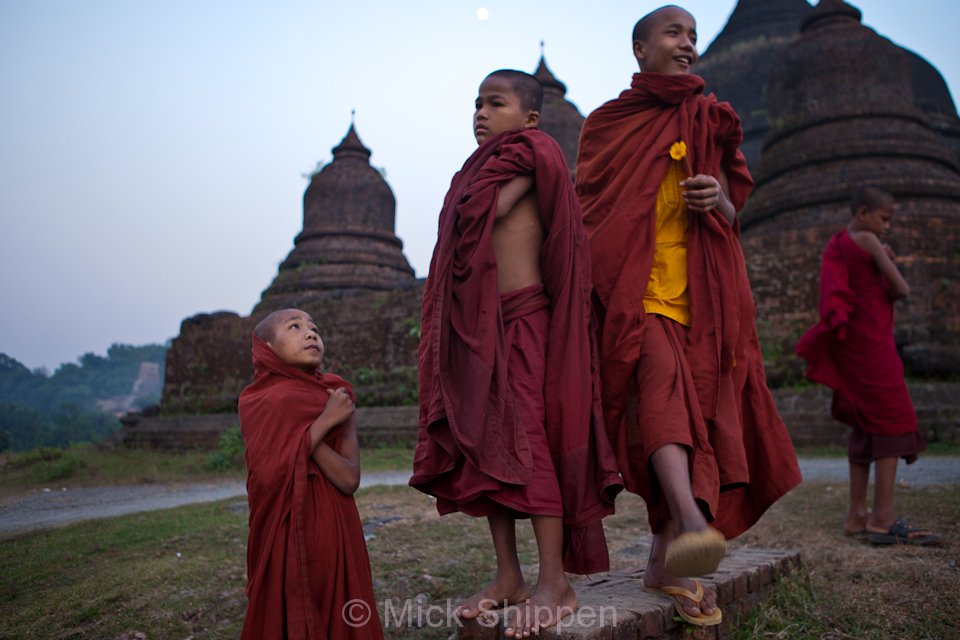
You can see more images in the Portfolio section.
Comment » | Travel
November 22nd, 2011 — 3:33pm
I’ve just returned from another trip to Myanmar. Travel within the country is pretty demanding as the infrastructure has suffered from many years of neglect, but the rewards for travelling here are great. If I could only travel to one country over the next decade it would be Myanmar. At every turn there is another fabulous photo opportunity.
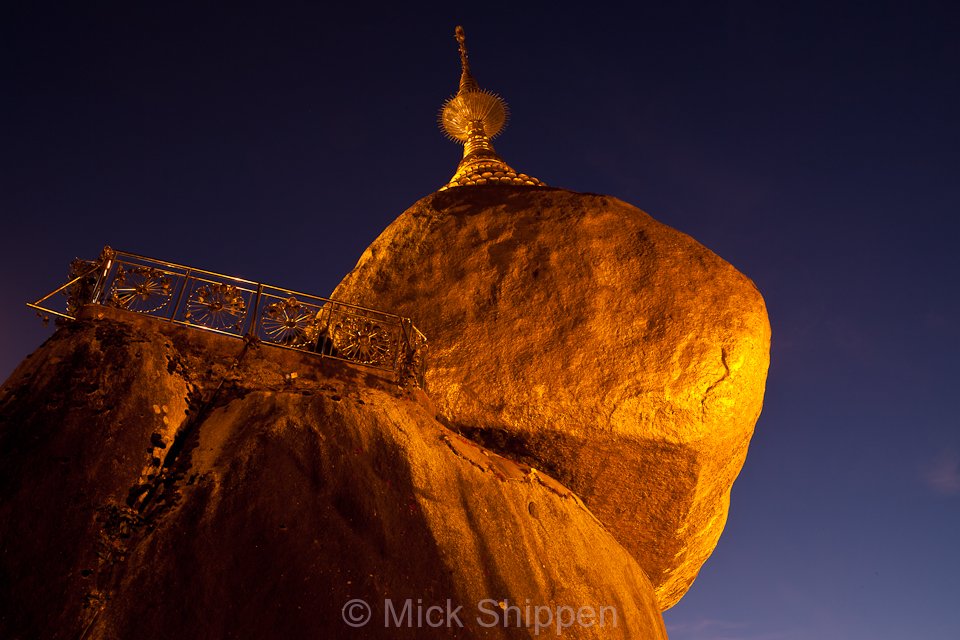
Over the next few days I’ll be posting images from several destinations, starting with the magnificent Golden Rock. Also known as Kyaik-htiyo, the Golden Rock is one of Myanmar’s most sacred Buddhist sites.
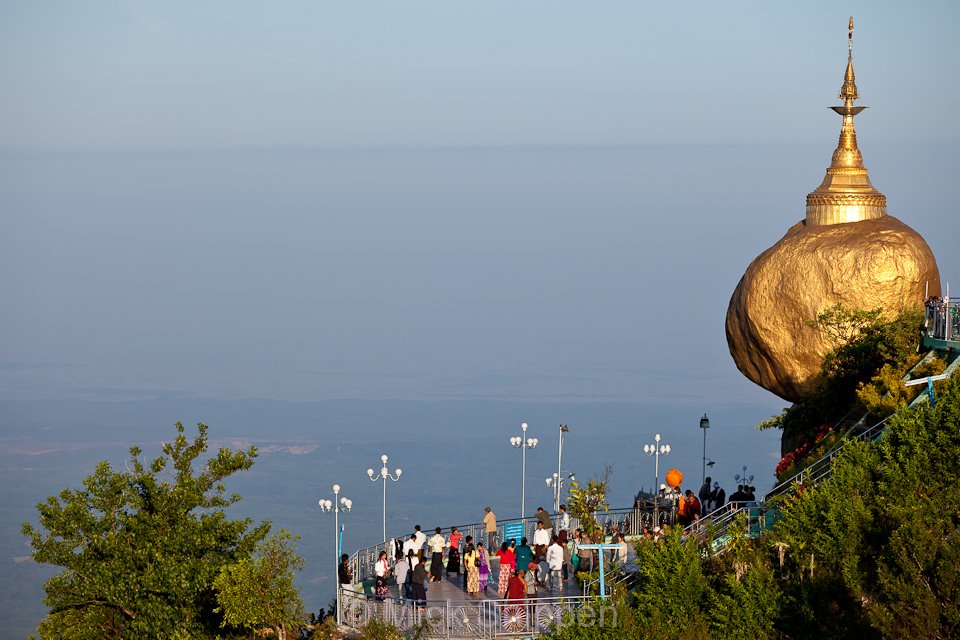
Located around three hours drive east of Yangon, it is a place of pilgrimage for Buddhists from all over Asia who come to pray and rub gold leaf on the precariously perched rock.
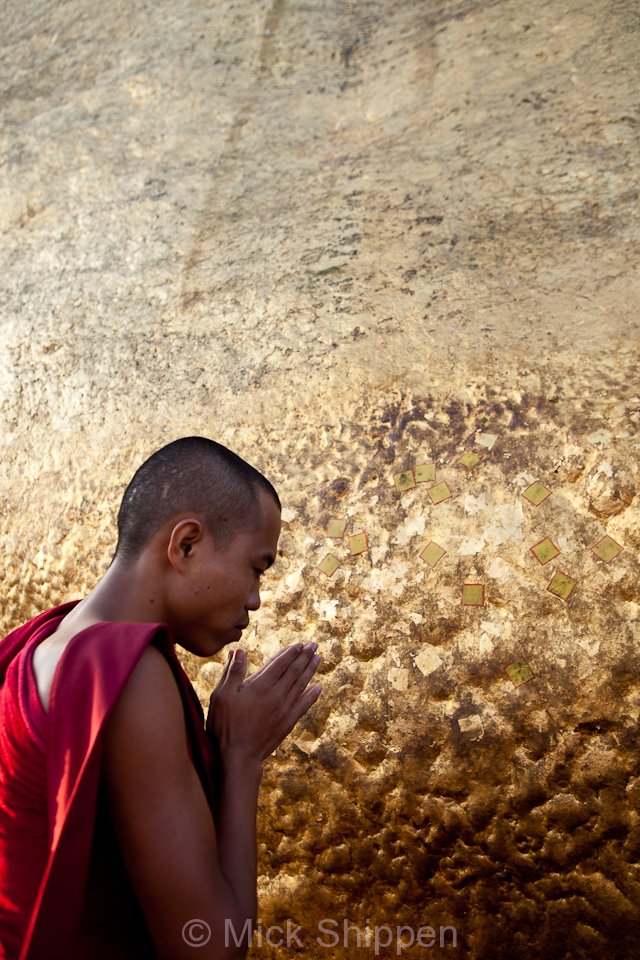
As with many sites of pilgrimage, getting there requires effort. A nail-biting truck ride takes you halfway up the mountain, and the rest of the steep climb is done on foot. If you want to experience both sunset and sunrise, make sure you stay at the hotels at the top – just a 10 minute walk from the actual site.
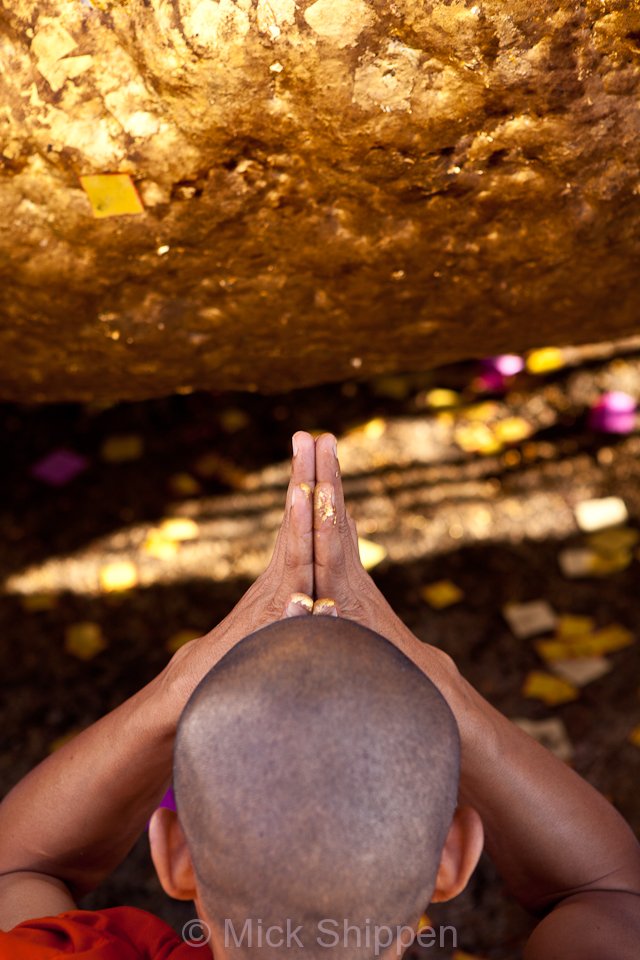
Comment » | Travel
October 24th, 2011 — 10:17am
Since Aung San Su Kyi’s release, Myanmar and Yangon has been put firmly in the travler’s spotlight. Yangon is one of my favourite cities in Southeast Asia and with the current mood of optimism for the future, there’s never been a better time to explore the country’s enchanting former capital.
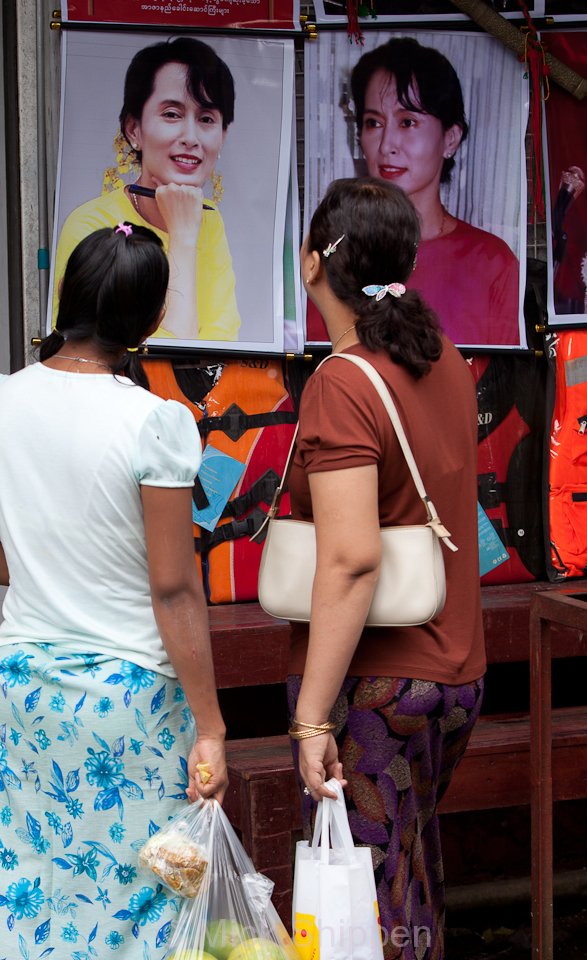
Yangon is an extremely pleasant city to wander around with a camera – a visual feast of imagery just waiting to be captured. Here’s a few street scenes from my last visit.
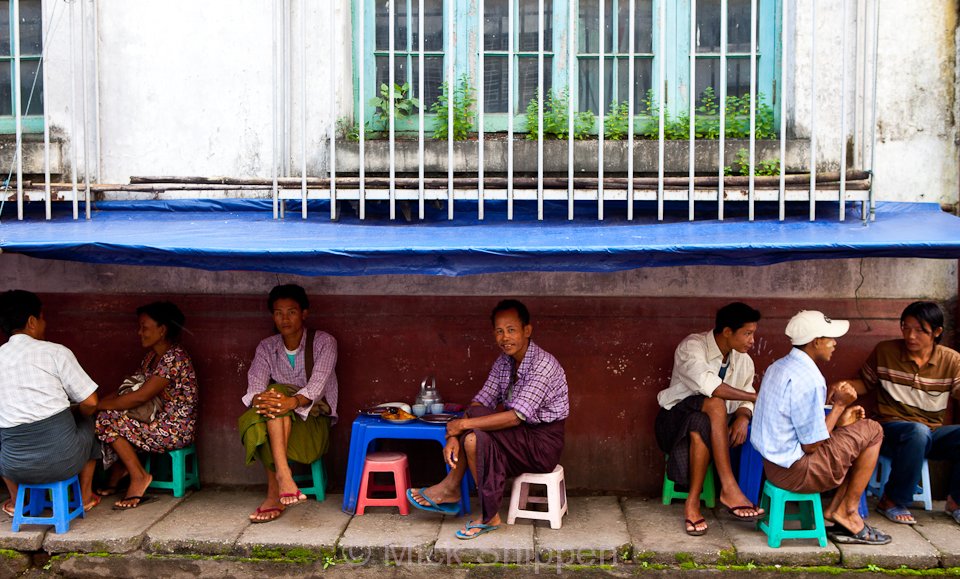

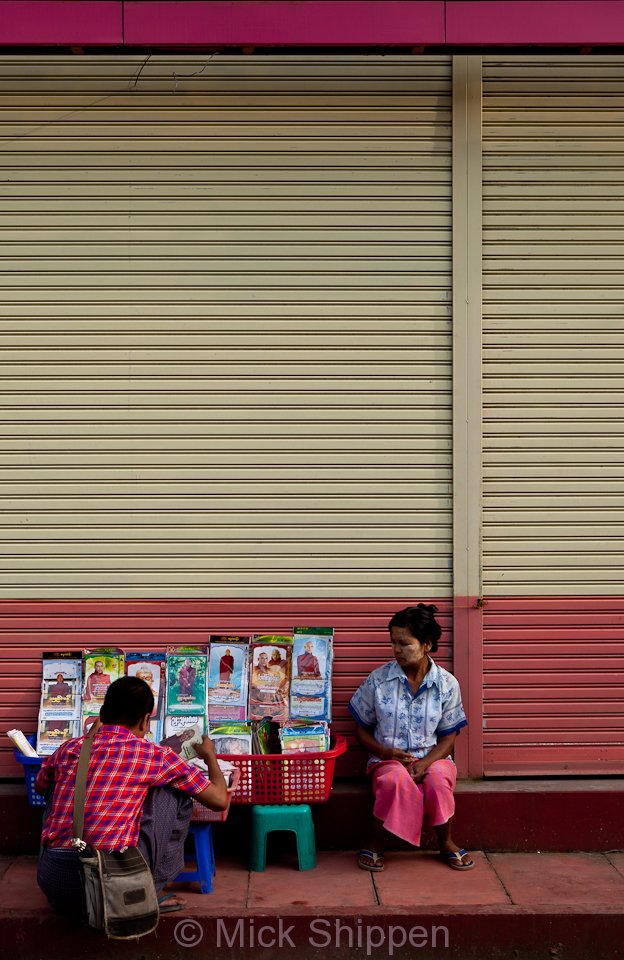
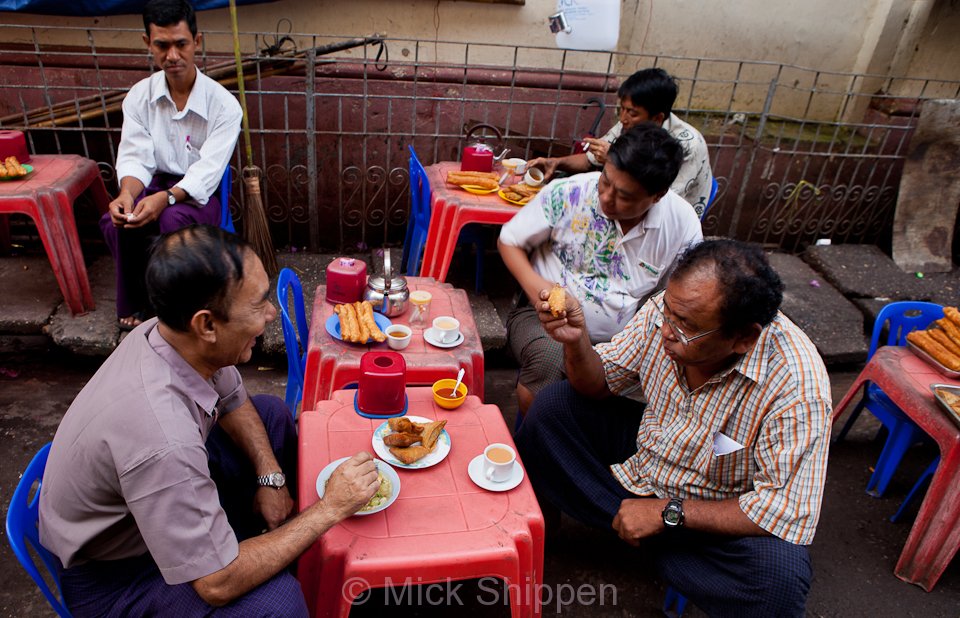
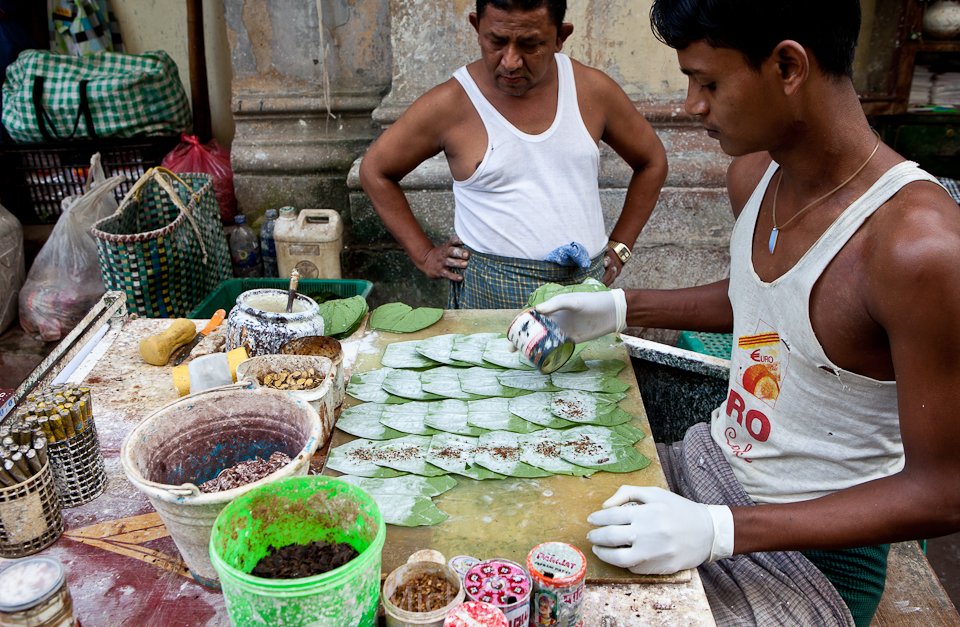
Visa on arrival is no longer available so if you are planning a trip, make sure you apply in advance at your nearest Myanmar embassy.
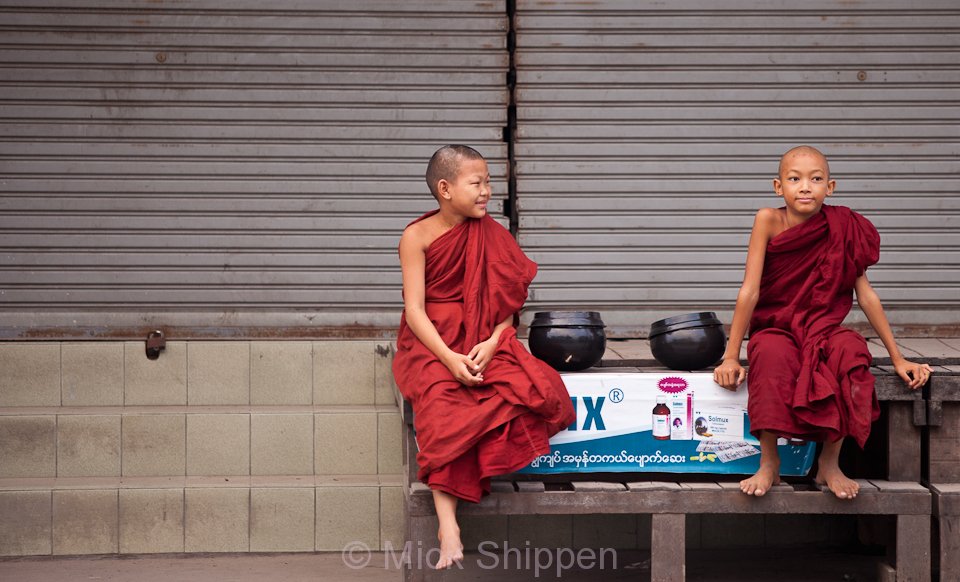
Hotel offerings in Yangon are rapidly increasing and the quality is excellent. Highly recommended is the Traders Hotel by Shangri-la. Located in the heart of the city within minutes walking distance of the Sule Pagado and the famous Scott Market, 242-room Traders Hotel offers value for money, comfortable rooms and suites, and Club Floor accommodation, all with impressive views across Yangon. Service is outstanding and the staff extremely helpful. Guests also benefit from a satisfying buffet breakfast of local, Indian and western cuisine at the Traders Cafe. Traders Hotel is located at 223 Sule Pagoda Road, Yangon. Tel: (95 1) 242828. Visit the website at www.shangri-la.com
Comment » | Travel
October 24th, 2011 — 9:11am
A stone’s throw from Mandalay’s stone carving district is a street lined with foundries casting bronze Buddha images. Using a process that dates back thousands of years, skilled craftsmen create detailed wax images of Buddhas which are encased in earthenware clay. The mould is then heated to burn out the wax and the bronze poured in. Foundries in Mandalay are renowned for producing high quality bronzes that are commissioned for temples all over the country.
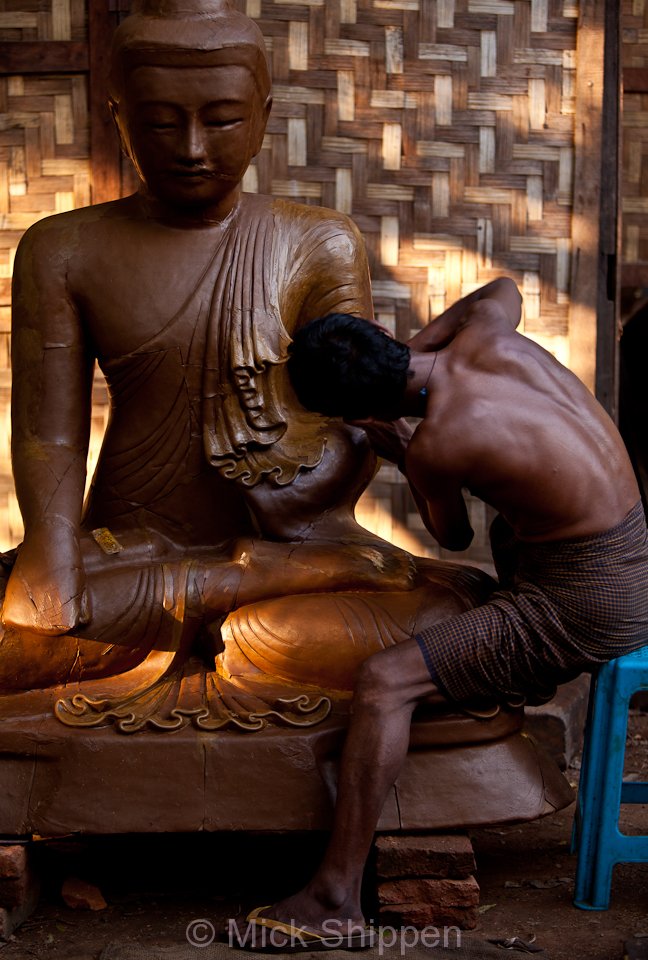
Here a sculptor at a workshop in Mandalay is working on a large wax image.
Comment » | Travel
October 17th, 2011 — 12:21pm
Fifteen kilometres from Mandalay in the former capital of Amarapura is U Bein Bridge. At 1.2 kilometres, it’s the world’s longest teak bridge and possibly Myanmar’s most recognisable landmark. It’s certainly one of the most photographed.
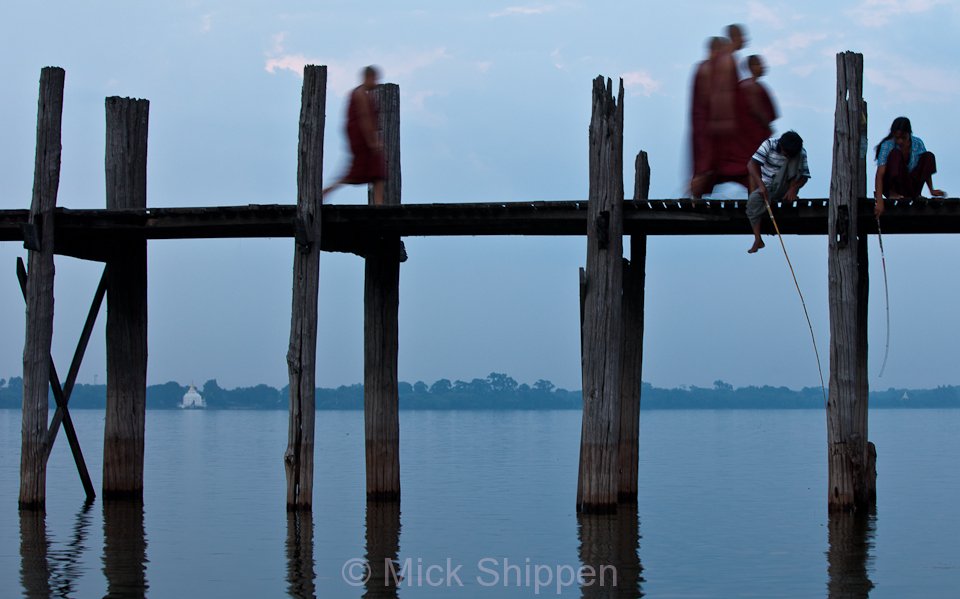
I first visited here 12 years ago when the country was attracting few visitors. Today, it is well and truly on every itinerary and I shudder to think what it will be like when the Myanmar tourist industry develops.
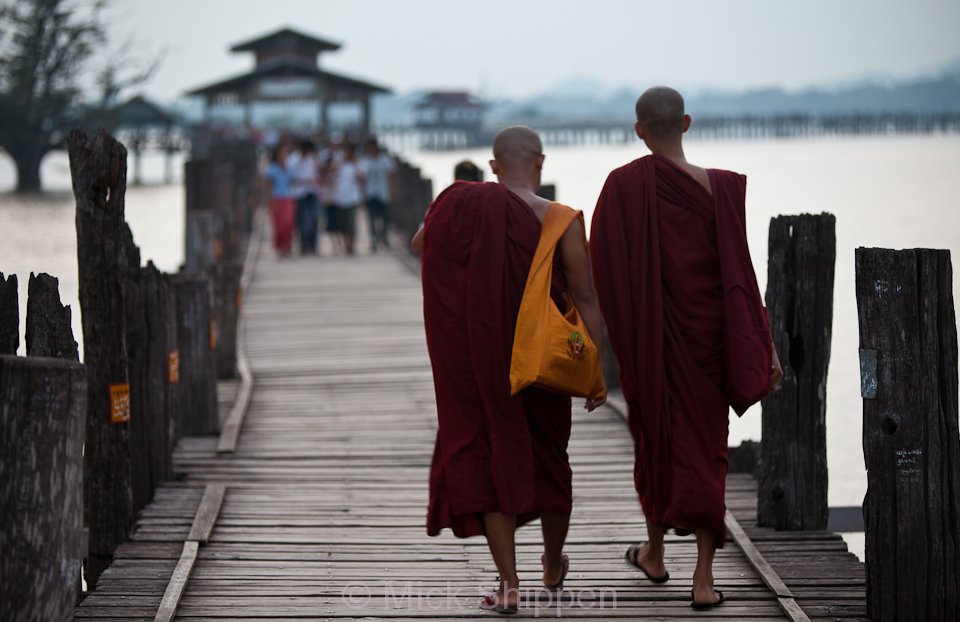
U Bein Bridge is one of those locations where you hope for clear skies, still water and vibrant sunsets. Unfortunately on the first of two visits last week I got a nasty washed-out sky, a breeze and no sunset to speak of – hence the need for a tripod and a slow shutter speed to get bring a touch of blue to one of the shots. I returned briefly the following evening when conditions were pretty similar but at least the sunset was OK.
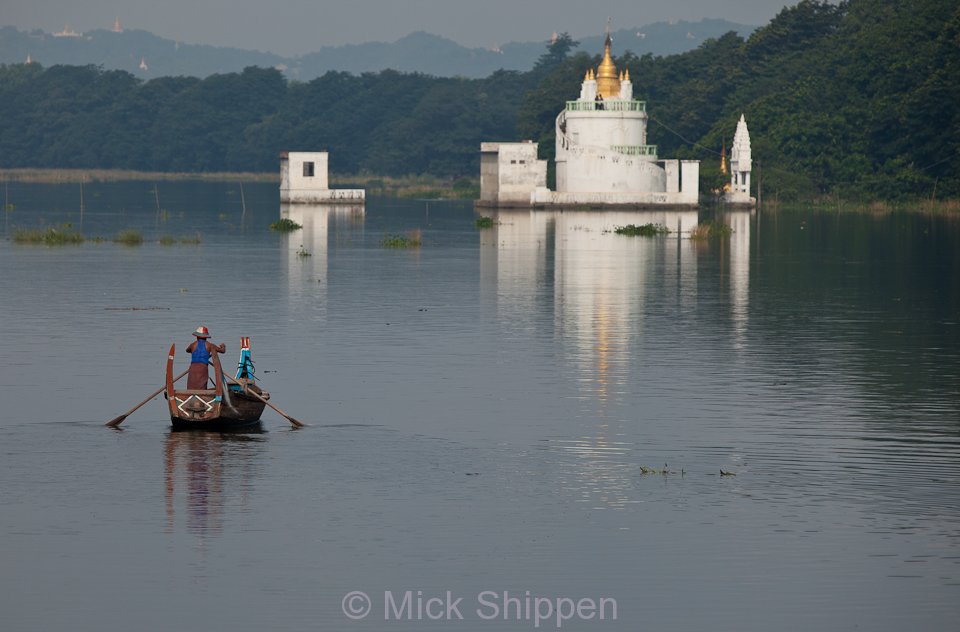
U Bein Bridge connects two small communities and spans a vast area which during the dry season is used for farming peanuts, sesame and other cash-crops. This year, Myanmar’s rainy season has been longer than usual but seems to be nearing the end. As a result the water was still pretty deep when I visited and the fishermen were out with their nets.
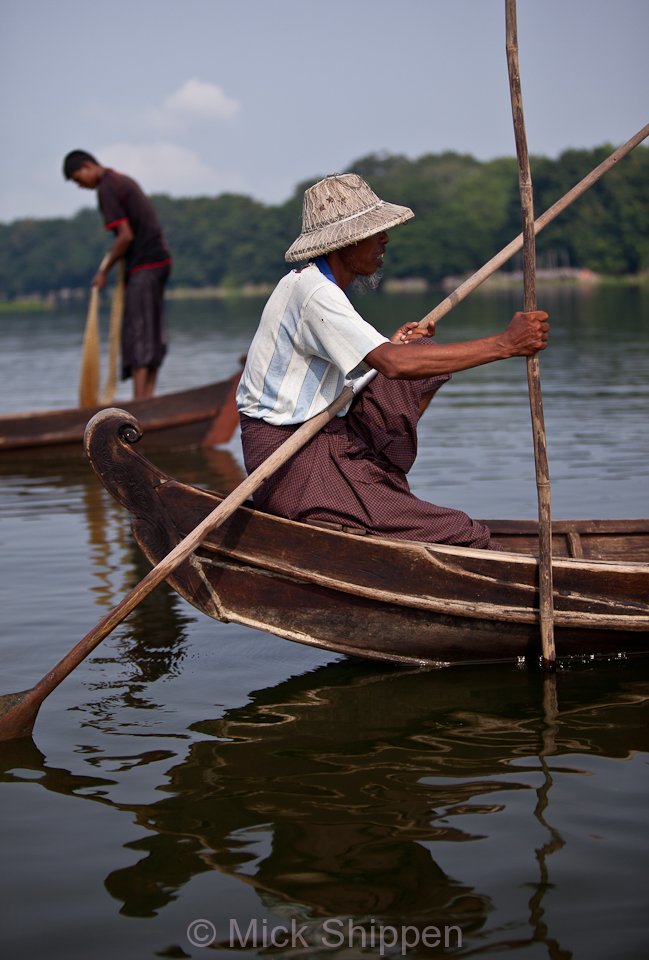
In years of excessive rain it is not unknown for the bridge to be completely submerged. In fact the middle section now includes some concrete posts, replacements for teak pillars that were washed away a few years ago.
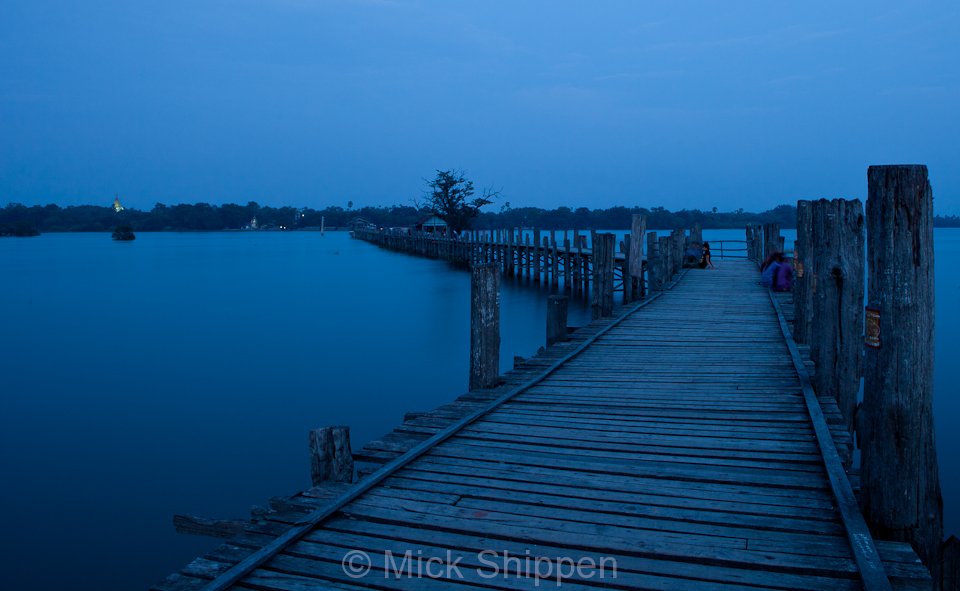
Next week I’ll be uploading a large batch of images from Myanmar into the Portfolio section so keep a look out. And don’t miss the fisherman sitting in the tree below…
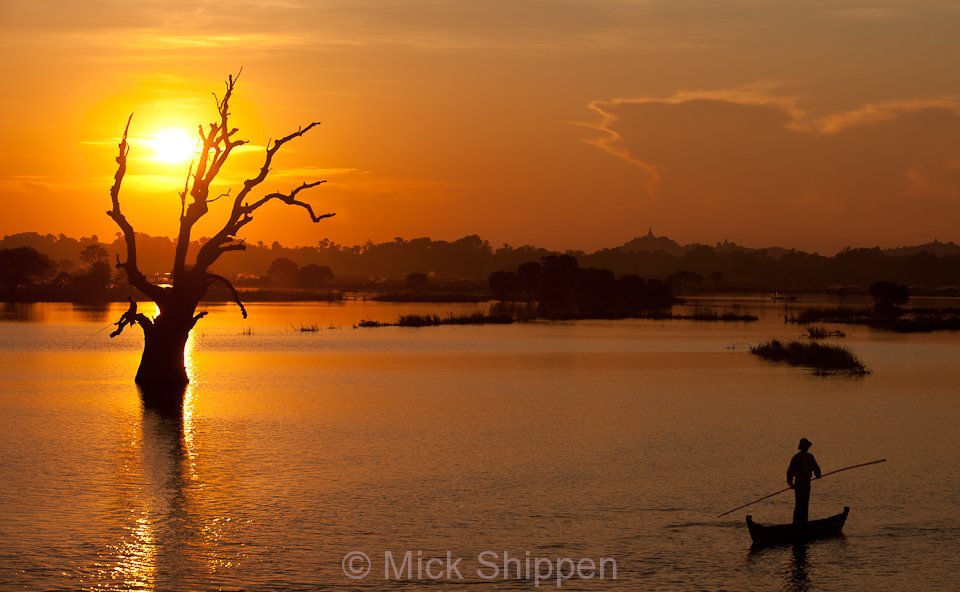
Comment » | Travel
October 17th, 2011 — 9:52am
I’ve just returned from a week-long trip to Myanmar and the city of Mandalay to take photographs for my current book commission. Mandalay is to Myanmar what Chiang Mai is to Thailand – the centre of the country’s arts and crafts industry. Weaving, bronze casting, stone carving and much more can all be found here.
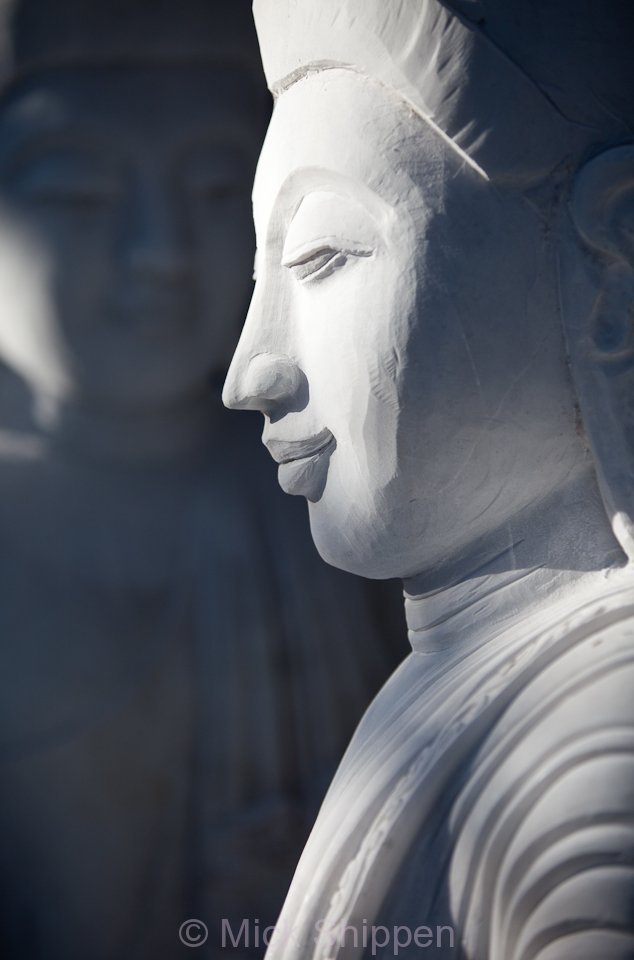
As with most arts in Myanmar the focus of the stone carvers is religious. In one part of town the streets are lined with the workshops of skilled craftsmen who attack pure white marble with angle grinders and drills to create the most enigmatic Buddha images.
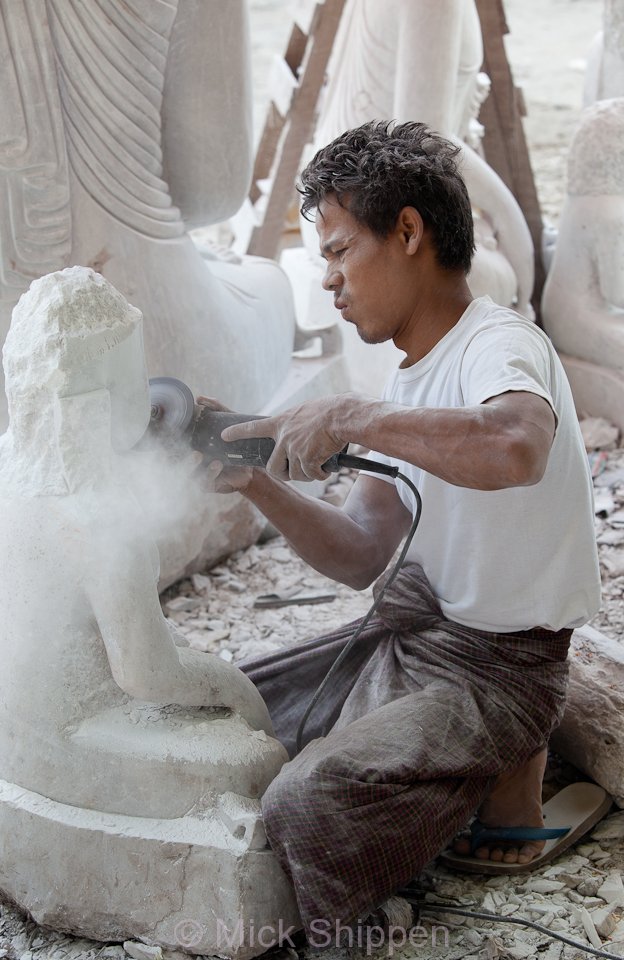
Carvings of all sizes, from the smallest keepsake to monumental three-metre high statues, can be seen in all stages of production.
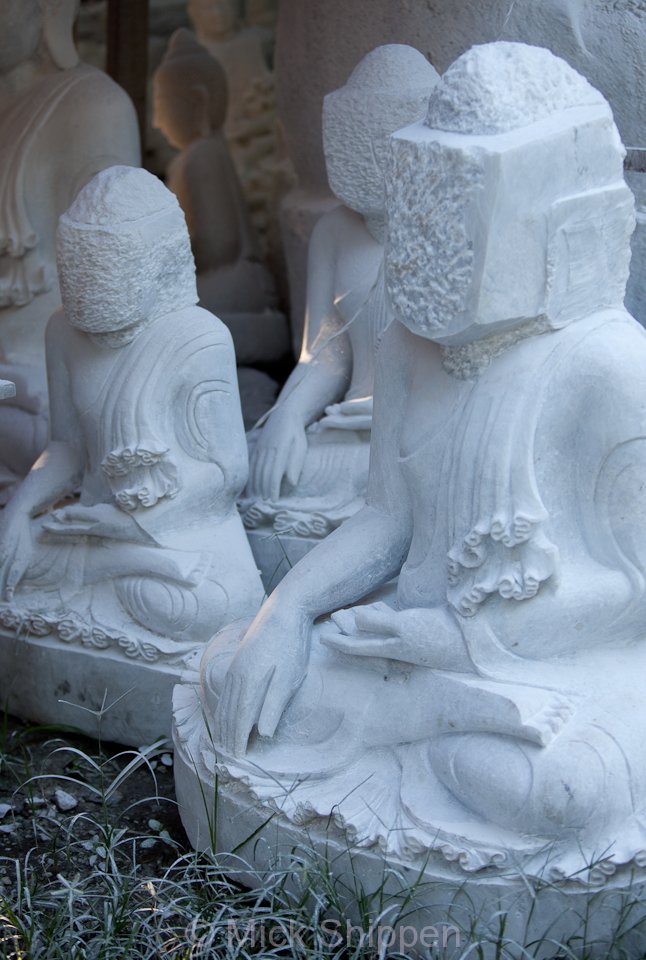
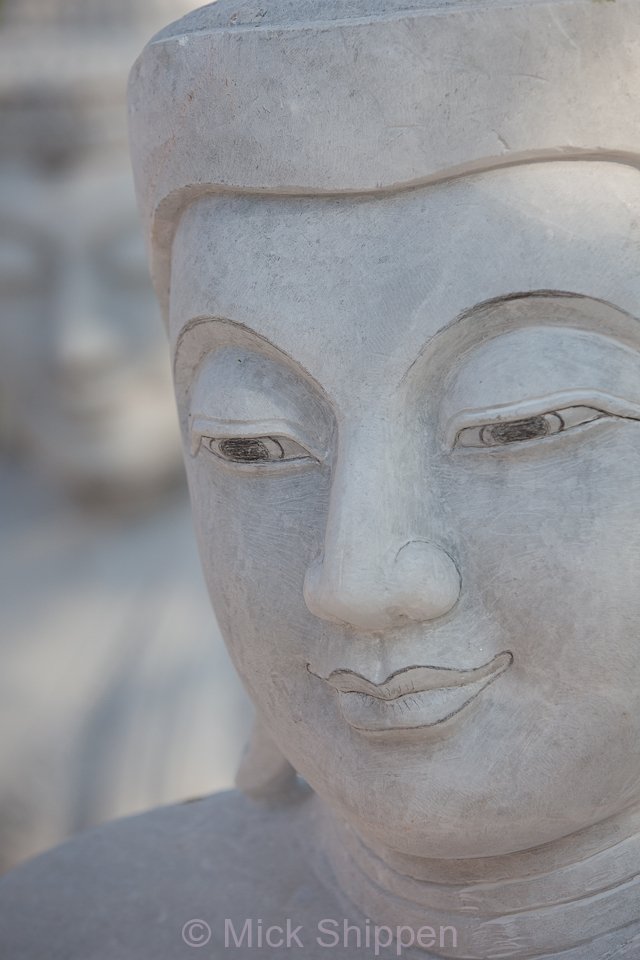
It’s a fascinating area to explore, especially in the early morning when monks and nuns walk the streets collecting alms.
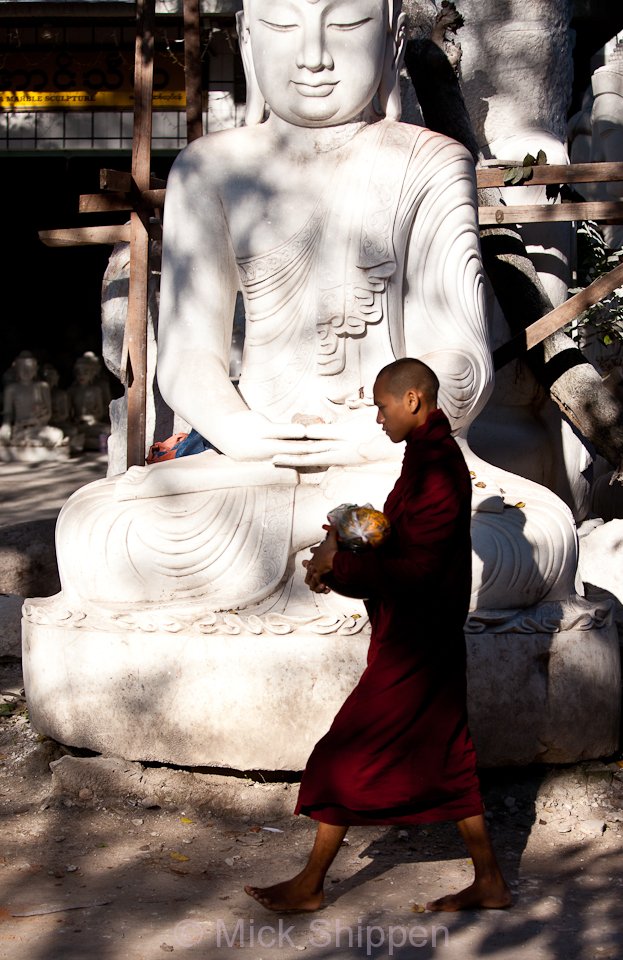
Comment » | Travel








































